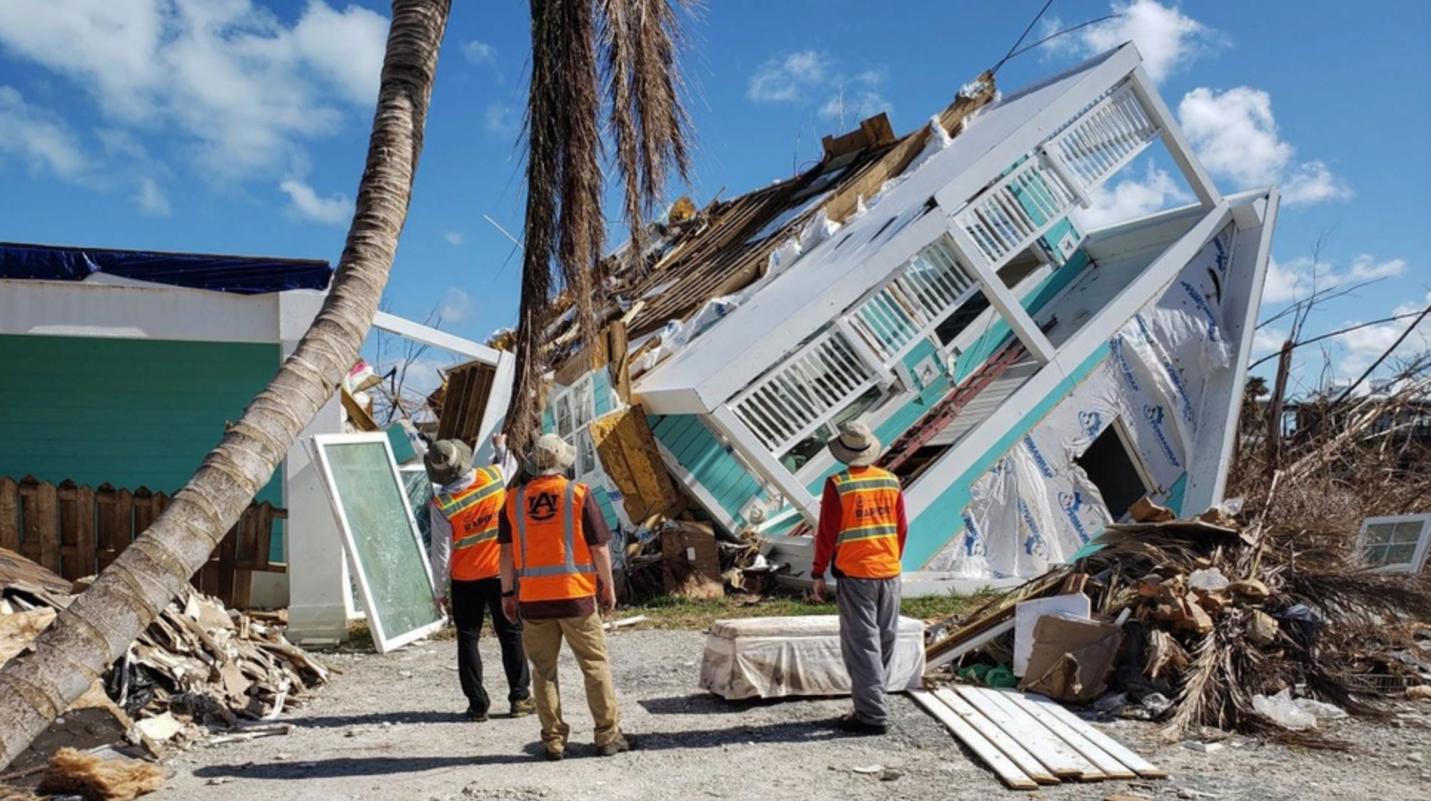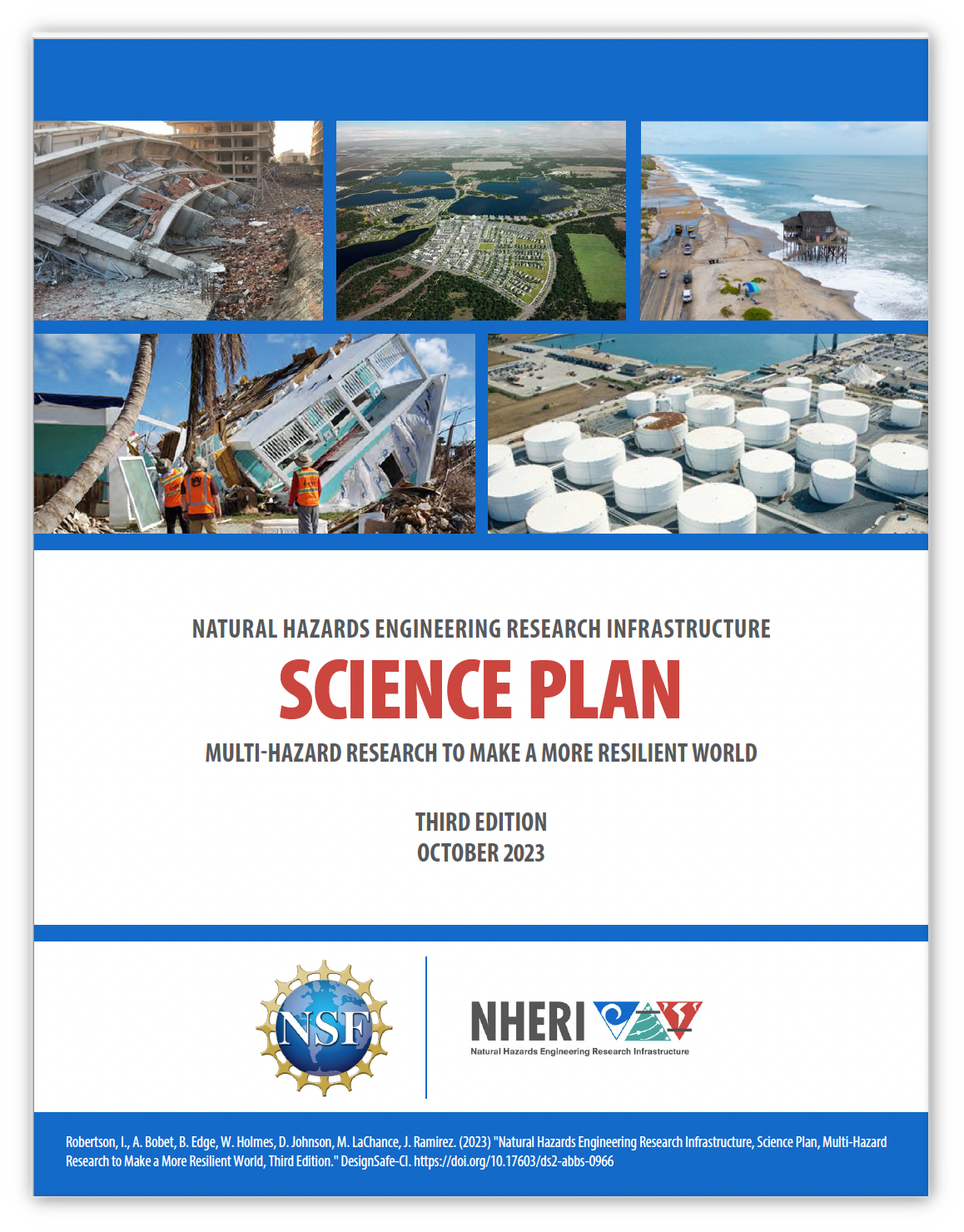FOR IMMEDIATE RELEASE
NHERI Science Plan: A Guide for Future Research in Natural Hazards Engineering
Purdue-led guide to natural hazards research now incorporates methodologies in hazard simulation and modeling, social science, and extreme events reconnaissance.
WEST LAFAYETTE, Ind., Nov. 8, 2023 — According to the National Institute of Building Sciences, U.S. disaster losses from wind, floods, earthquakes and fires now average $100 billion per year, and in 2017 exceeded $300 billion. Such losses affect communities large and small across our nation.
The new NHERI Science Plan, Third Edition, offers practical research approaches to mitigate these losses.
Download the NHERI Science Plan, Third Edition.

Julio Ramirez, NHERI NCO PI
“Research engineers, working across disciplines, can design safer structures and make our communities more resilient,” said Julio Ramirez, Karl H. Kettelhut Professor in Civil Engineering and principal investigator for the NHERI Network Coordination Office (NCO), headquartered at Purdue University.
“In this third edition of the NHERI Science Plan, we present ways researchers can leverage NSF-funded resources, from centrifuges to cyberinfrastructure — all to protect our civil infrastructure and our communities,” he added.
The Natural Hazards Engineering Research Infrastructure, NHERI, is a nation-wide, multi-million-dollar NSF-funded network dedicated to preventing damage from hazards like earthquakes, tsunamis, wildfires and windstorms.

Damage to 2-story building in Treasure Cay, Great Abaco Island, Bahamas, due to Hurricane Dorian, September, 2019. (Image: StEER, Structural Engineering Extreme Event Reconnaissance)

A Guide for Natural Hazards Researchers
"Our third edition of the NHERI Science Plan was developed by an interdisciplinary team of researchers and scientists led by our NCO colleague Ian Robertson,” Ramirez said.
Robertson, professor and chair of the Department of Civil, Environmental and Construction Engineering at the University of Hawai’i Manoa, is an earthquake engineer and a co-PI with the NHERI NCO. Robertson led a team of experts to revise the third edition, which incorporates the latest NHERI network resources. Robertson professor and chair of the Department of Civil, Environmental and Construction Engineering at the University of Hawai’i Manoa.
“The individuals on the team have had direct experience using NHERI resources, leading their own research teams, and implementing the results into practice,” said Robertson. "We hope this NHERI community document stimulates ideas for engineers and scientists developing grant proposals seeking to make our communities safer and more resilient against natural hazards."
“The Science Plan provided a very high-level picture with key research questions covering the entire natural hazard research field. I must say this has been very helpful in shaping my mind and defining research problems. I definitely recommend it to researchers, particularly early career faculty trying to understand the frontier challenges.” – Gaby Ou, University of Florida
The document outlines the field’s current grand challenges and key research questions and includes example research campaigns. In addition, the Science Plan provides details on resources and opportunities for research, including interdisciplinary-team research, using one or more of the 13 NHERI experimental facilities.
Science Plan as roadmap. The NHERI Science Plan Third Edition illuminates numerous research avenues. In doing so, the document serves to inspire and guide early career researchers exploring disaster research in large-scale experimentation, computer modeling and simulation, the social sciences, and novel engineering techniques for mitigating damage from earthquake, wind, fire, and coastal hazards.
“This third edition of the NHERI Science Plan is a comprehensive, 130-page reference work for natural hazards researchers across disciplines and engineering specialties,” said Robertson. “It’s packed with research ideas, approaches, and suggestions.”
New in the Third Edition
This third edition of the NHERI Science Plan is expanded to incorporate all NSF-funded NHERI resources, including:
- details related to computer simulation and modeling using NHERI SimCenter applications;
- social science best practices advanced by NHERI CONVERGE;
- as well as extreme events reconnaissance and research.
Further, leveraging insights from the NHERI SimCenter, CONVERGE and extreme event teams, the third edition presents a decidedly interdisciplinary approach to natural hazards research.
“We have significantly updated the Key Research Questions,” said Robertson. "Also, each of our example research campaigns demonstrates strategies and tactics for incorporating the strengths of multiple disciplines to achieve sustainable, equitable research goals.”
I think the Science Plan is really helpful, particularly for newer, more junior researchers. It certainly helped me understand how my research ideas fit into the bigger picture of natural hazards engineering research, and what is seen as important from our research community.” – Elaina Sutley, University of Kansas
Another highlight of the third edition is a comprehensive list of Extreme Events Research and Reconnaissance teams, NSF-funded groups dedicated to collecting perishable data before, during and after earthquakes, windstorms, tsunamis and other natural hazards.
Sample research campaigns outlined in the Science Plan include:
- Understanding and Reducing Vulnerability of Low-Income Communities to Windstorms
- Increasing Regional Resilience to Mega Seismic Events: Cascadia Subduction Zone Earthquake and Tsunami
- Cascading and Compounding Impacts of Natural Hazards
- A Community-Driven Integrated Research Campaign for Hurricanes
- Infrastructure Impacts of Climate Change-induced Migration
- Net-Zero Building Materials and Construction
- Securing our Nation Through Communication and Education
This third edition of the NHERI Science Plan exemplifies the changing nature of research in natural hazards. New approaches – and new problems – continue to arise. Nevertheless, this resource offers practical approaches for natural hazards researchers working in diverse disciplines – from engineering to social science – to unite and solve the pressing problems natural hazards present to communities in the U.S. and around the world







